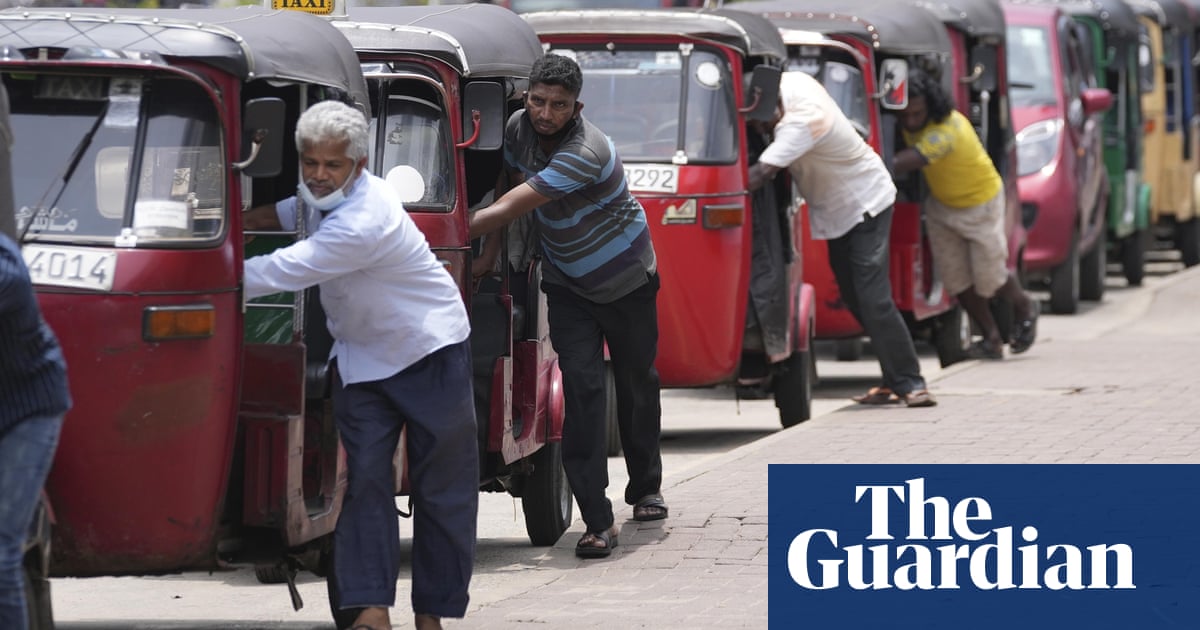
The world’s poorest countries are expected to pay 35% more in debt interest bills this year to cover the extra cost of the Covid-19 pandemic and a dramatic rise in the price of food imports, according to a World Bank report.
More than £63bn will be spent by the 75 countries, many of them in sub-Saharan Africa, that make up the poorest nations, to cover loans taken out mostly over the past decade and higher interest rates.
The World Bank said it was concerned that debt payments were consuming more of government spending in poor countries when they were already struggling to provide education and health services.
In a plea to rich countries the boss of the Washington-based international development group said social unrest was the likely consequence if poor nations were forced to divert cash from welfare programmes to debt interest payments.
“The debt crisis facing developing countries has intensified,” said the president, David Malpass.
“A comprehensive approach is needed to reduce debt, increase transparency, and facilitate swifter restructuring – so countries can focus on spending that supports growth and reduces poverty.
“Without it, many countries and their governments face a fiscal crisis and political instability, with millions of people falling into poverty.”
Zambia is among a number of countries negotiating to reschedule its debts to prevent a default. Government officials are seeking $8.4bn (£6.9bn) from major lenders, including private funds run by the world’s largest investment manager, BlackRock, to help put its public finances back in order.
A strong rise in the value of the dollar since 2019 was also cited by the report for making the situation worse. Most loans are made in dollars and the strengthening US currency means poor countries suffer a fall in the value of their own currency and are less able to finance their debts.
An offshoot of the World Bank – the International Development Association (IDA) – counts 75 of the poorest countries among its membership. It has agreed billions of dollars worth of grants and interest-free loans, but these have not proved sufficient to prevent IDA debt rising to $1tn.
A shift in borrowing by developing nations away from richer governments – known as the Paris Club of lenders – to private banks and non-governmental sources has resulted in the payback time for loans to more than halve and interest rates to rocket.
The World Bank said the average length of a Paris Club loan was 25 years compared with the average 12 years offered by private lenders, and the average annual interest rate increased from 2% to 5%.
Most countries have seen their debts rise the last two years to pay for welfare and health support during the pandemic and to offset the rising costs of gas and food since the beginning of the Ukraine war.
However, poor countries have limited scope to increase tax to cover higher costs, forcing them to seek expensive loans from private lenders.
China is on course to be the biggest single creditor to poor countries after a lending spree over the last decade to fund major infrastructure projects.
China is expected to account for 66% of the debt-service payments made this year by IDA countries on their official bilateral debt.
India, Russia and Turkey have also become major creditors to poor countries in a series of deals that are mostly hidden by commercially confidential contracts.
The report shows rising debt-related risks for all developing economies, including middle-income economies.
At the end of 2021, the external debt of low and middle-income economies totalled $9tn, more than double the amount a decade ago.
Indermit Gill, the World Bank’s chief economist, said about 60% of the poorest countries are already at high risk of debt distress or already in distress.
He said it was more difficult for poor countries to renegotiate and reschedule their debts when they were locked into agreements with private banks where the details of the deal were opaque.
“Poor debt transparency is the reason so many countries sleepwalk into a debt crisis,” said Gill. “Complete, transparent debt data improves debt management. It makes debt sustainability analyses more reliable. And it makes debt restructurings easier to implement, so that countries can return quickly to economic stability and growth. It is not in any creditor’s long-term interest to keep public debt hidden from the public.”
By the end of 2021, 61% of long-term public and publicly guaranteed debt worth $3.6tn was owed to private creditors rather than Paris Club or other official creditors, compared with 46% in 2010.
Malpass, a Donald Trump appointee, has faced calls to overhaul the organisation’s focus towards climate change, primarily to help indebted sub-Saharan countries worst affected by extreme weather conditions and rising debt levels.
The United Nations conference on trade and development (Unctad) said in a separate report ahead of its 13th Debt Management Conference later this week that government debt levels as a share of GDP increased in more than 100 developing countries between 2019 and 2021.
It said that excluding China, this increase is estimated at about $2tn.
“Almost all developing countries have been left to face an impossible trade-off in a context marred by a pandemic, geopolitical instability and climate distress,” said Unctad secretary-general, Rebeca Grynspan.
“Debt cannot and must not become an obstacle for achieving the 2030 agenda and the climate transition the world desperately needs,” she added.












